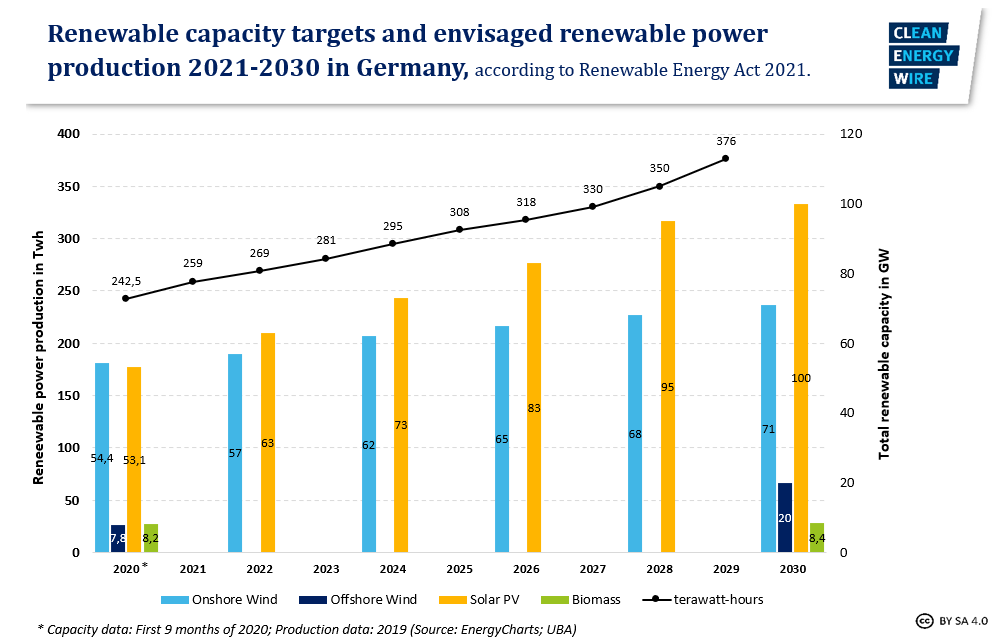Renewables share could be as low as 55% in 2030 – report
Clean Energy Wire
While Germany is aiming to have renewable energy sources account for a total of 65 percent of its gross electricity consumption by 2030, the country is unlikely to reach this target, according to the Institute of Energy Economics (EWI) at the University of Cologne. In its new analysis the EWI found that the actual figure which can be achieved with the measures and expansion pathways set in the government's 2021 Renewable Energy Act (EEG) could be as low as 55 percent. The possible difference results from an estimated electricity demand of 685 terawatt-hours (TWh) per year and the planned electricity generation from renewable energy sources of 377 TWh per year. In its analysis, “Impact of the EEG 2021 on the share of renewables in electricity demand in 2030“, the EWI estimated the gross electricity consumption for the year 2030 and compared that figure to the planned electricity generation from renewable energy sources. In order for Germany to achieve the 65 percent target, the country will have to meet higher electricity demand and significantly higher renewable energy generation than foreseen in the current law. While the German government assumes gross electricity consumption of 580 TWh per year by 2030, the EWI estimates that figure will be actually be around 685 TWh due to the increasing uptake of electric vehicles and heat pumps as well as the planned production of green hydrogen. The study also finds that renewable generation will have to be considerably higher than what is expected in the EEG 2021 in order to reach the 65 percent target. The law currently foresees an installed renewables capacity of 205 GW and generation of 377 TWh in 2030, up from 243 TWh in 2019. “Our analysis shows that to meet the 65 percent target, generation from renewables would have to be 68 TWh higher in 2030 compared to the EEG,” said EWI manager Max Gierkink.
In related news, the German Renewable Energy Federation (BEE), updating its 2030 scenario, calculates that a 77 percent renewables share of a total gross electricity demand of 745 TWh is required in 2030 in order to achieve climate targets and a significant decrease in fossil fuel generation from 329 TWh in 2019 to 169 TWh by the end of the decade. “Onshore wind and photovoltaics have the greatest potential for growth, but the mix of all renewable energy technologies is needed for an increasingly flexible electricity market,” said BEE President Simone Peter.


